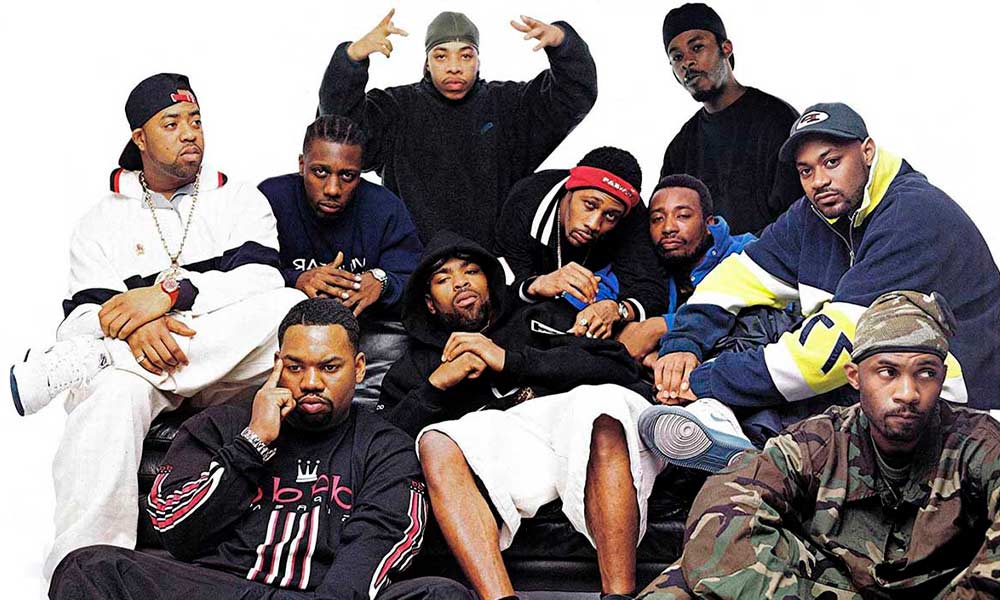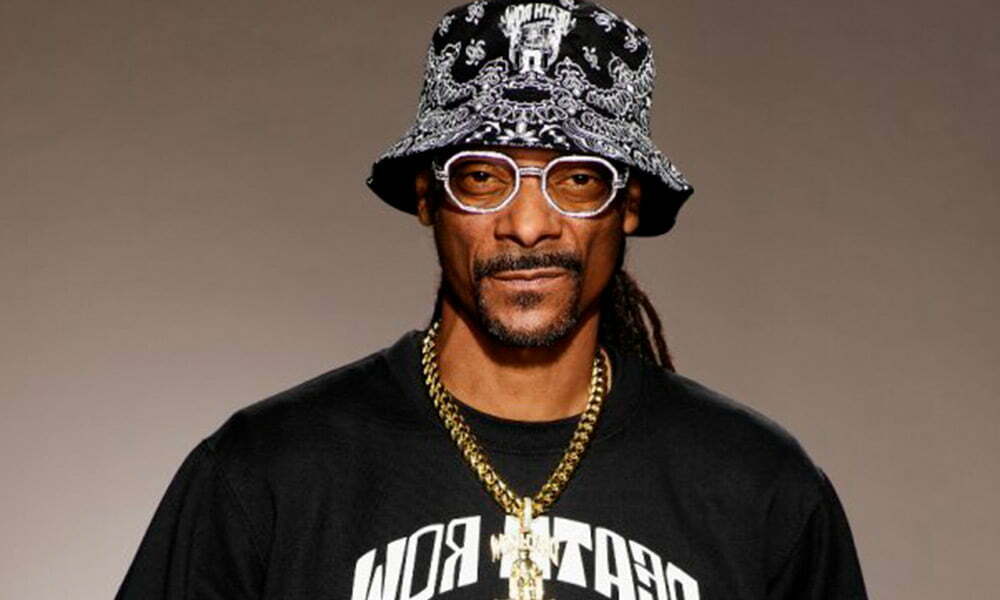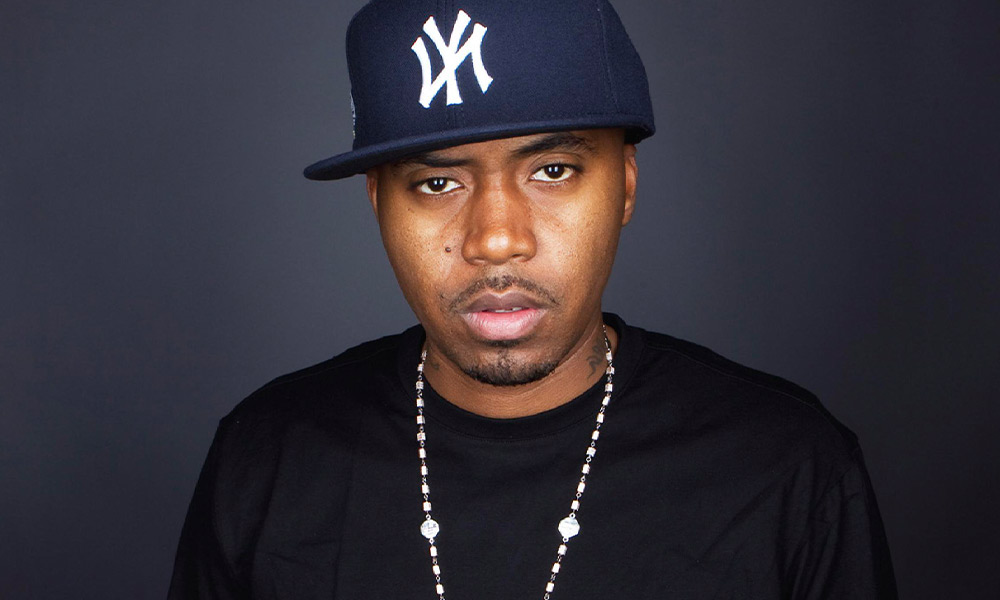The Golden Age of Rap: Iconic Rappers of the 90s
In the 1990s, hip hop experienced its golden age with the emergence of a plethora of rappers who left an indelible mark on the genre’s history. The 90s were a time of change and evolution for rap, transitioning from a marginalized music genre to one of the most popular and lucrative in the world. In this article, we will explore the “Golden Age of Rap” and reminisce about some of the iconic rappers from the 90s whose lyrics and styles have made a lasting impact on popular culture.
The Pioneers of 90s Rap: Artists Who Shaped a Decade of Musical Success
The 1990s were a time of immense creativity and innovation in rap music, featuring the emergence of many artists who have left a lasting legacy in popular culture. The pioneers of 90s rap were the artists who shaped the decade, defining the sound and style of the genre for future generations.
One of the most influential pioneers of 90s rap was the group N.W.A. with their 1988 album “Straight Outta Compton,” which changed the way people talked about life in marginalized neighborhoods. Another pivotal group was Wu-Tang Clan, with their 1993 album “Enter the Wu-Tang (36 Chambers),” which blended hip hop culture with kung fu culture.
Additionally, rapper Tupac Shakur, who also began his career in the 1990s, was one of the most significant and influential artists of 90s rap. With his straightforward rap style and focus on life in marginalized neighborhoods, Tupac established a lasting legacy as one of the greatest rappers of all time.
Other pioneers of 90s rap include Dr. Dre, Notorious B.I.G., Snoop Dogg, Ice Cube, Public Enemy, Nas, and Jay-Z. Each of these artists made significant contributions to the evolution of rap during the decade, and many of them continue to be influential in popular culture today.
The Subgenres of 90s Rap: From Gangsta to Conscious Rap
90s rap was a time of great evolution and diversity in terms of subgenres. One of the most influential and well-known subgenres of this period was gangsta rap, characterized by its violent, raw, and explicit content, as well as its aggressive and heavy musical production. Artists such as N.W.A, Ice-T, Dr. Dre, and Snoop Dogg were some of the prominent figures in gangsta rap.
However, not all rap in the 90s was focused on violence and criminality. Other subgenres that emerged during this period include conscious rap, which focused on social and political issues such as the fight against racial discrimination, economic inequality, and systemic oppression. Artists like Public Enemy, KRS-One, and Common were leaders in this movement.
Additionally, subgenres like alternative rap also emerged, which focused on musical experimentation and more introspective and personal lyrics. The West Coast rap scene also emerged, focusing on creating a unique and distinctive sound that reflected the culture and life of the region. Artists like Tupac Shakur, Notorious B.I.G., Wu-Tang Clan, and Outkast also helped define and shape the sound of 90s rap.
The Most Memorable Collaborations of 90s Rappers
The 90s were a golden age for rap, and many artists from that era collaborated with each other to create some of the most memorable and iconic songs in the genre’s history. Here are some of the notable collaborations of 90s rappers:
- “Mo Money Mo Problems” – The Notorious B.I.G. feat. Puff Daddy and Mase: This song, released in 1997, was an instant hit and became one of the greatest rap hits of all time. The song samples Diana Ross’ “I’m Coming Out” and features the collaboration of Puff Daddy and Mase.
- “California Love” – 2Pac feat. Dr. Dre: Released in 1995, this song became a West Coast anthem and is one of 2Pac’s biggest hits. The song features the production and vocal collaboration of the legendary Dr. Dre.
- “Gangsta’s Paradise” – Coolio feat. L.V.: This song, released in 1995, was an instant success and is considered one of the most iconic rap songs of the 90s. The song features the vocal collaboration of L.V. and was produced by Doug Rasheed.
- “Nuthin’ But a G Thang” – Dr. Dre feat. Snoop Dogg: This song, released in 1992, is considered a West Coast rap classic. The song features the vocal collaboration of Snoop Dogg and was produced by Dr. Dre.
- “Scenario” – A Tribe Called Quest feat. Leaders of the New School: This song, released in 1991, is a collaboration between two of the most influential rap groups of the 90s. The song features the vocal collaboration of Busta Rhymes, who was a member of Leaders of the New School at that time.
These are just some of the most memorable collaborations of 90s rappers, but there are many others that are equally important and influential in the history of the genre. Overall, the collaborations of 90s rappers helped define the sound and aesthetic of the genre during that time and have left a lasting legacy in popular music.
The Legacy of 90s Rappers: How They Influenced Popular Culture and Today’s Music
90s rappers had a profound and lasting impact on popular culture and today’s music. In many ways, the 90s were a golden age for rap, with an explosion of talent and creativity that took the genre to new heights. Here are some ways in which 90s rappers have influenced culture and today’s music:
- Established rap as a significant genre: 90s rappers helped establish rap as a significant and respected genre in popular music. Artists like Tupac Shakur, The Notorious B.I.G., Jay-Z, and Nas were some of the most influential of the era and helped establish rap as a legitimate and valuable form of art.
- Created rap classics: 90s rappers created some of the genre’s classics that are still heard and enjoyed today. Songs like Snoop Dogg’s “Gin and Juice,” Ice Cube’s “It Was A Good Day,” Nas’ “NY State of Mind,” and 2Pac’s “California Love” continue to be some of the most iconic and representative songs of 90s rap.
- Defined the aesthetics of rap: 90s rappers helped define the aesthetics of rap, from fashion and style to sound and musical production. 90s rap fashion, including baggy clothing, sneakers, and baseball caps, continues to be a significant influence in today’s fashion culture.
- Inspired a new generation of artists: 90s rappers inspired a new generation of artists who have carried on their legacy. Artists like Kendrick Lamar, J. Cole, and Drake have cited 90s rappers as important influences in their work and have kept the flame of rap alive today.
The Emergence of New Trends in 90s Rap: Exploring Diversity in the Genre
During the 90s, rap experienced a surge of creativity and diversity in the genre, giving rise to new trends that expanded the scope and audience of rap. These new trends included a variety of styles and approaches adopted by a wide range of artists. Here are some examples of the new trends that emerged in 90s rap:
- Gangsta rap: Gangsta rap, popularized by artists like N.W.A., Ice-T, and Snoop Dogg, was characterized by aggressive and explicit lyrics that spoke about life in marginalized neighborhoods in the United States. Gangsta rap became one of the most influential forms of 90s rap and laid the foundation for many trends that emerged later in the decade.
- Conscious rap: Conscious rap, also known as political or socially conscious rap, was characterized by lyrics that addressed social and political issues such as racial inequality, police violence, and poverty. Artists like Public Enemy, KRS-One, and Queen Latifah were some of the prominent representatives of conscious rap in the 90s.
- Alternative rap: Alternative rap was characterized by a more experimental approach to musical production and lyrics, often incorporating elements of rock, jazz, and other musical genres. Artists like The Roots, Outkast, and A Tribe Called Quest were some of the pioneers of alternative rap in the 90s.
- Pop rap: Pop rap, also known as commercial rap, was characterized by its focus on market-oriented production and lyrics geared towards the mainstream. Artists like Vanilla Ice, MC Hammer, and Will Smith had success in pop rap in the 90s, and their success brought increased attention and popularity to the genre as a whole.
The Impact of Gangsta Rap in the 90s: A Look at the Pioneers of the Genre
Gangsta rap was one of the most influential and controversial subgenres in 90s rap. This form of rap was characterized by its explicit and violent content, as well as its raw and realistic portrayal of life in marginalized neighborhoods in the United States. Despite the criticisms and controversies surrounding gangsta rap, this subgenre had a significant impact on popular culture and music in the 90s.
One of the pioneers of gangsta rap was N.W.A., a rap group from Los Angeles formed in 1986. N.W.A. released their debut album “Straight Outta Compton” in 1988, which included songs like “Fuck tha Police” and “Gangsta Gangsta” that became anthems of the gangsta rap movement. The group was also known for their explicit and uncensored lyrics, and their unapologetic depiction of life in marginalized neighborhoods.
Another influential artist in gangsta rap was Tupac Shakur, whose career began in the mid-90s. Tupac was known for his political and social lyrics, as well as his realistic approach to life in marginalized neighborhoods. His albums “All Eyez on Me” and “The Don Killuminati: The 7 Day Theory” became classics of gangsta rap and helped solidify his position as one of the genre’s most important artists.
Other artists who helped popularize gangsta rap include Ice-T, Snoop Dogg, and Dr. Dre. Dr. Dre’s debut album “The Chronic,” released in 1992, was a major commercial and critical success and is considered one of the most influential albums in rap history. The album included songs like “Nuthin’ But a G Thang” and “Dre Day,” which became gangsta rap hits.
Despite its popularity and impact on popular culture, gangsta rap was also subject to criticism and controversy. Critics accused gangsta rap artists of glorifying violence and crime and being insensitive to the consequences of their music. Gangsta rap was also criticized for its use of explicit and offensive language, leading to debates about censorship and freedom of expression.
The Rise of Alternative Rap in the 90s: Bands and Artists Who Changed the Game
During the 90s, alternative rap emerged as a subgenre of rap that sought to push boundaries and challenge the conventions of the genre. Unlike gangsta rap, which focused on violence and criminality, alternative rap addressed more introspective and personal themes and drew from a wide range of musical influences and vocal styles. Here are some of the most influential bands and artists of 90s alternative rap.
- The Roots: Hailing from Philadelphia, The Roots became one of the most respected hip hop bands of the 90s. With their blend of live instrumentation and deep, poetic lyrics, The Roots stood out for their ability to fuse rap with other musical genres, such as jazz and funk.
- A Tribe Called Quest: This Queens, New York group was one of the pioneers of alternative rap. With their laid-back style and introspective lyrics, A Tribe Called Quest became role models for alternative rap artists looking to move away from the aggressive and violent tone of gangsta rap.
- De La Soul: Hailing from Long Island, New York, De La Soul stood out for their experimental approach and use of samples from a wide variety of genres, from funk to classical music. Their 1989 album, “3 Feet High and Rising,” is considered one of the most influential albums in the history of alternative rap.
- Outkast: The Atlanta duo consisting of André 3000 and Big Boi became one of the most successful and respected acts in 90s alternative rap. With their distinctive style and ability to blend rap with other genres, such as soul and rock, Outkast stood out for their fresh and groundbreaking approach.
- Wu-Tang Clan: With their focus on martial arts culture and their aggressive, street-oriented style, Wu-Tang Clan became one of the most influential acts in 90s alternative rap. With their ability to combine dark samples with raw and realistic lyrics, Wu-Tang Clan set a new standard for alternative rap.
The Role of Rap in 90s Popular Culture: Soundtracks, Music Videos, and More
In the 90s, rap had a significant impact on popular culture. From music to movies and fashion, rap influenced an entire generation. Here are some of the highlights of rap’s role in 90s popular culture.
- Soundtracks: Rap became a constant presence in movie and TV show soundtracks. Films like “Menace II Society” (1993), “Boyz n the Hood” (1991), and “Above the Rim” (1994) included soundtracks with songs from popular rap artists of the time, such as Dr. Dre, Ice Cube, and Tupac Shakur. These soundtracks not only introduced rap music to a wider audience but also helped establish rap artists as part of popular culture.
Music Videos:
Rap music videos also became an integral part of 90s popular culture. Artists like Wu-Tang Clan, Busta Rhymes, and Missy Elliott used their videos to create complex and futuristic visual universes that complemented their songs. These videos were not only seen as innovative artistic expressions but also helped establish rap artists as influential figures in popular culture.
- Fashion: Fashion was also influenced by rap in the 90s. Rap artists like LL Cool J and Salt-N-Pepa popularized the use of sportswear and flashy jewelry, while groups like Wu-Tang Clan popularized the use of Asian-style clothing and medallions. This fashion spread through popular culture and became an integral part of the aesthetic of the time.
- Language: The language of rap also infiltrated 90s popular culture. Terms like “dope,” “phat,” “fresh,” and “bling” became common in the slang of the time and were further popularized through rap music and videos.
The Influence of 90s Rappers on Current Music: How the Golden Decade Continues to Impact Popular Culture
The rap music of the 90s left a lasting impact on popular culture and continues to be a source of inspiration and reference for artists today. Here are some examples of how the influence of 90s rappers continues in current music.
- Sampling: 90s music was known for its use of samples, which involves taking fragments of previous songs and reusing them in new songs. This technique became a distinctive hallmark of the genre and remains popular in today’s rap music. 90s artists like Wu-Tang Clan and Dr. Dre were pioneers in the use of sampling, and their influence can be heard in current artists like Kanye West and J. Cole.
- Lyrics: 90s rappers addressed important themes in their lyrics, including urban violence, social injustice, and politics. This trend has carried over into today’s rap music, where many artists continue to speak out on social and political issues. Kendrick Lamar, for example, is known for addressing topics like police brutality and the struggle for racial justice in his songs.
- Collaborations: 90s rappers also set a precedent for collaborations in rap music. Many of the most successful artists of the decade collaborated with each other, resulting in some of the genre’s most iconic songs. This practice of collaboration continues in current rap music, where artists like Travis Scott and Drake have become known for their successful collaborations.
Production:
Production in 90s rap music was known for its innovation and creativity. Producers like Dr. Dre and DJ Premier used a variety of techniques and styles to create the distinctive sound of the decade. This attention to detail in production has influenced today’s rap music, where many artists place a great emphasis on the production of their songs.
The Most Iconic Samples from 90s Rappers: The Music That Inspired a Generation
In 90s rap music, the use of samples was a common and distinctive technique. Producers took snippets from previous songs and incorporated them into new rap songs, creating a unique and recognizable sound. Here are some of the most iconic samples used by 90s rappers.
- “Impeach The President” – The Honey Drippers: This sample has been used in countless rap songs, including N.W.A.’s “Straight Outta Compton,” Public Enemy’s “Fight the Power,” and The Notorious B.I.G.’s “Juicy.” The drum sound and the singer’s shout are particularly distinctive and have become an integral part of the sound of 90s rap.
- “Funky Drummer” – James Brown: The drum sample from “Funky Drummer” has been used in many rap songs, including LL Cool J’s “Mama Said Knock You Out,” Eminem’s “My Name Is,” and Ice Cube’s “It Was A Good Day.” Clyde Stubblefield’s distinctive drumming has become a staple of the sound of 90s rap.
- “Synthetic Substitution” – Melvin Bliss: The drum sample from this song has been used in many rap songs, including Eric B. & Rakim’s “Paid in Full,” Jay-Z’s “Dead Presidents II,” and Main Source’s “Looking At The Front Door.” The distinctive drumming and chorus have been a staple of the sound of 90s rap.
- “Apache” – The Incredible Bongo Band: This sample has been used in many rap songs, including Sugarhill Gang’s “Rapper’s Delight,” Black Sheep’s “The Choice Is Yours,” and Run-DMC’s “King of Rock.” The guitar sound and drum break have become a staple of the sound of 90s rap.
- “Amen, Brother” – The Winstons: This drum sample has been used in many rap songs, including N.W.A.’s “Straight Outta Compton,” N.W.A.’s “Fuck Tha Police,” and Boogie Down Productions’ “The Bridge Is Over.” The distinctive drum break has become a staple of the sound of 90s rap.
90s Rap Fashion: How Artists’ Aesthetics Defined a Decade
90s rap not only had a significant impact on music and popular culture, but it also made its mark on fashion. The clothing and accessories worn by rap artists of the time have become an icon of the decade’s style. Here are some of the standout fashion trends from 90s rap.
- Tracksuits and Sportswear: Tracksuits and sportswear became the norm in the world of 90s rap. Artists like Run-DMC, LL Cool J, and Wu-Tang Clan brought tracksuits into mainstream fashion, making them a must-have for any rap enthusiast.
- Oversized Clothing: 90s rappers were also known for wearing oversized clothing. T-shirts, sweatshirts, and jackets were commonly two or three sizes larger than necessary, giving artists a commanding and relaxed look. This style was popularized by artists like Notorious B.I.G., Tupac, and Wu-Tang Clan.
- Caps and Hats: Caps and hats were an integral part of the 90s rapper look. Sports caps, such as NBA team caps, became a staple for any rap lover. Tupac took the look a step further with his iconic fisherman hats.
- Jewelry: Jewelry has always been a form of expression in the rap world, and in the 90s, this was more evident than ever. Artists wore large and flashy gold chains, oversized rings, and bracelets, turning jewelry into a way to display their status and wealth.
- Timberland Boots and Sneakers: Sneakers and Timberland boots became the preferred footwear of 90s rappers. Timberland boots became an icon thanks to artists like Nas and Wu-Tang Clan, while Air Jordans were the most popular sneakers among rappers.
Controversy in 90s Rap: Exploring Lyrics that Challenged Censorship and Broke Barriers
During the 90s, rap experienced significant controversy due to the explicit and often violent lyrics presented in songs. This controversy largely focused on the gangsta rap scene, which was characterized by its focus on gang violence, criminality, and the harsh realities of life in poor neighborhoods.
The lyrics in gangsta rap songs often depicted life in impoverished neighborhoods as a lawless world where violence was a way of life and drug trafficking was a common means of making a living. These lyrics challenged the social and cultural norms of the time and often faced censorship and bans on radio and television.
However, many 90s rap artists used their music to address important issues and challenge social injustices. For example, Tupac Shakur, one of the most influential rappers of the decade, wrote songs that tackled topics such as police brutality, poverty, and racial discrimination.
Another example is the song “Fuck tha Police” by N.W.A., which directly challenged police brutality and racism in law enforcement. The song sparked significant controversy and was banned from many radio stations, but it was also widely acclaimed for its bravery and its ability to draw attention to an important issue.
FAQs:
Who are some of the iconic rappers of the 90s?
Some of the iconic rappers of the 90s include Tupac Shakur, The Notorious B.I.G., Jay-Z, Wu-Tang Clan, Nas, Dr. Dre, Snoop Dogg, Outkast, and A Tribe Called Quest, among others.
Why are the 90s considered the golden age of rap?
The 90s are considered the golden age of rap because it was a time when the genre achieved great popularity and diversified into different sub-genres such as gangsta rap, alternative hip hop, and conscious rap. Additionally, many of the most iconic rappers of all time emerged during this period.
What was the influence of 90s rappers on popular culture?
90s rappers had a significant influence on popular culture as their songs and fashion styles became key elements of the fashion and music of the time. Additionally, many 90s rappers addressed important issues in their lyrics such as poverty, racial discrimination, and violence, making them important voices for social justice.
What made 90s rappers so successful?
90s rappers were successful for several reasons, including their ability to tell stories in an authentic and emotive way, their ability to connect with their audience, and their ability to evolve and adapt as popular culture changed.
How has rap evolved from the 90s to today?
Since the 90s, rap has evolved in many aspects, from instrumentation to lyrical style and fashion. Additionally, rap has gained greater acceptance in popular culture and has been embraced by artists from different genres. In terms of lyrics, modern rap often focuses on themes such as anxiety, depression, and mental health, in addition to addressing relevant social and political issues.
CONCLUSION:
The rappers of the 90s left an indelible mark on popular culture and the history of rap. During this era, the genre evolved and diversified, and many of the most influential rappers of all time emerged on the scene. The music of 90s rappers was authentic, emotive, and often addressed important issues, making them significant voices for social justice. As rap has evolved and grown in popularity, the golden age of 90s rappers continues to be seen as a pivotal moment in the genre’s history. Though more than a decade has passed since then, the music and artists that emerged during this period are still remembered and celebrated for their impact on popular culture and music as a whole. In summary, the golden age of 90s rap was a unique and influential era in the genre’s history, and its artists and influences continue to resonate in today’s music and popular culture.



